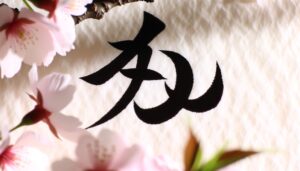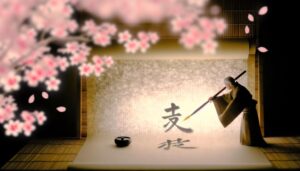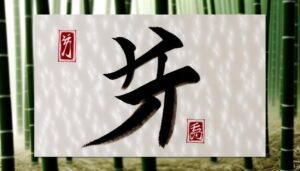What Is the Symbol for Noisy in Japanese Kanji?
The Japanese kanji for 'noisy,' written as 騒 (sō), intricately combines the radicals for 'horse' (馬) and 'mouth' (口). Originating from classical Chinese characters, this kanji symbolizes noise, disturbance, and social unrest.
The character's visual structure evokes imagery of activity and commotion, providing a vivid representation of noisiness. Pronunciation can vary by region and context, reflecting Japan's phonetic richness.
Historically, it has expanded to illustrate disturbances beyond mere sound, encompassing any troublesome scenario. Used broadly in modern Japanese, it criticizes environmental and behavioral annoyances.
To fully grasp its cultural significance and usage nuances, consider exploring further.

Key Takeaways
- The kanji 騒 (sō) represents noise or disturbance in Japanese.
- It combines the radicals for 'horse' and 'mouth' to symbolize noisiness.
- 騒 (sō) is used to describe loud, annoying, or bothersome things.
- This kanji reflects cultural attitudes towards maintaining social harmony.
- It appears frequently in modern media to depict noisy or disruptive situations.
Etymology of 騒 (sō)
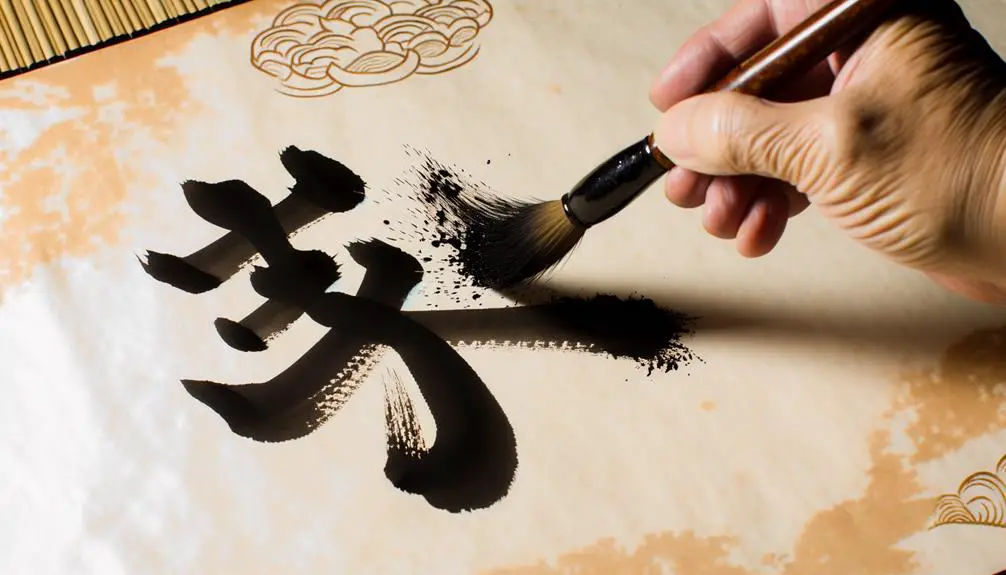
The etymology of 騒 (sō) reveals a rich tapestry of cultural and linguistic evolution, tracing its origins back to classical Chinese characters and their adaptation in Japanese script.
Initially derived from the Chinese character '騒,' representing the idea of noise or disturbance, it was incorporated into Japanese kanji with nuanced meanings. In Chinese, '騒' combines '馬' (horse) and '蚤' (flea), metaphorically suggesting restless movement.
Japanese adaptation retained this semantic essence while integrating it into the phonetic and syntactic structures of the language. Over centuries, 騒 (sō) evolved, encapsulating not just literal noise but also broader connotations of social unrest and commotion, illustrating the dynamic interplay between linguistic form and cultural context.
Visual Breakdown of the Kanji
In examining the kanji 騒 (sō), we must first consider its constituent radicals, which include the 'horse' radical (馬) and the 'mouth' radical (口), reflecting its complex semantic structure.
The stroke order, critical for proper writing and recognition, follows a specific sequence that emphasizes both form and meaning.
Understanding these elements provides a deeper appreciation of the kanji's visual composition and its cultural connotations of noisiness and tumult.
Kanji Element Analysis
Analyzing the kanji for 'noisy' (騒) reveals a complex interplay of radicals, each contributing to the overall meaning and cultural connotations of the character.
This kanji is composed of three primary elements, each symbolizing different aspects:
- 馬 (uma): Representing 'horse', it conveys movement and activity, common in noisy environments.
- 虫 (mushi): Denoting 'insect', it suggests small, pervasive disturbances often associated with noise.
- 口 (kuchi): Symbolizing 'mouth', it indicates vocal noise or chatter.
Together, these radicals form a vivid representation of 'noisy', merging imagery of bustling activity, pervasive disturbances, and vocal sounds.
This intricate structure not only reflects the physical aspects of noise but also embodies the cultural perceptions of disturbance and activity in Japanese society.
Stroke Order Breakdown
Understanding the stroke order of the kanji for 'noisy' (騒) is important for accurate writing and comprehension, reflecting the character's complexity and cultural significance.
This kanji is composed of 18 strokes, starting from the left radical, which symbolizes a horse (馬), and moving to the right radical, which represents sounds (音).
The sequence begins with the left side, forming the horse radical, which is written first to maintain structural balance. Following this, the strokes proceed to create the intricate right side, starting with the upper elements and concluding with the lower ones.
This meticulous order not only aids in memorization but also upholds traditional calligraphic practices, ensuring the kanji's aesthetic integrity and legibility.
Pronunciation and Variations

Pronunciation of the Japanese word for 'noisy,' represented by the kanji '煩い' (urusai), varies depending on regional dialects and contextual usage.
In standard Japanese, 'urusai' is commonly pronounced with an emphasis on the second syllable. However, variations exist:
- Regional Dialects: In Kansai, it may be pronounced with a softer tone, reflecting local speech patterns.
- Contextual Usage: When expressing annoyance, speakers might elongate the sound, e.g., 'uru-saaai.'
- Informal Speech: Shortened forms like 'urusē' can be heard in colloquial settings.
- Politeness Levels: The formality of the situation can influence pronunciation, with more formal contexts favoring a neutral tone.
Understanding these nuances enriches comprehension of Japanese phonetic diversity.
Historical Context
Tracing the historical context of the kanji 'うるさい' (urusai) reveals its linguistic evolution and cultural significance in Japan. Originally, 'urusai' was written using the kanji 煩, which depicted a combination of fire and a door, conveying a sense of being troublesome or bothersome.
Over time, its meaning expanded to include auditory disturbances, reflecting societal changes and the importance of harmony in Japanese culture. This evolution underscores the Japanese emphasis on communal tranquility and the aversion to disruptions.
The kanji's semantic shift offers insights into historical attitudes toward noise and social order, indicating how language adapts to cultural norms and practices. Understanding 'urusai' provides a deeper appreciation for the interplay between language and cultural values in Japan.
Usage in Modern Japanese
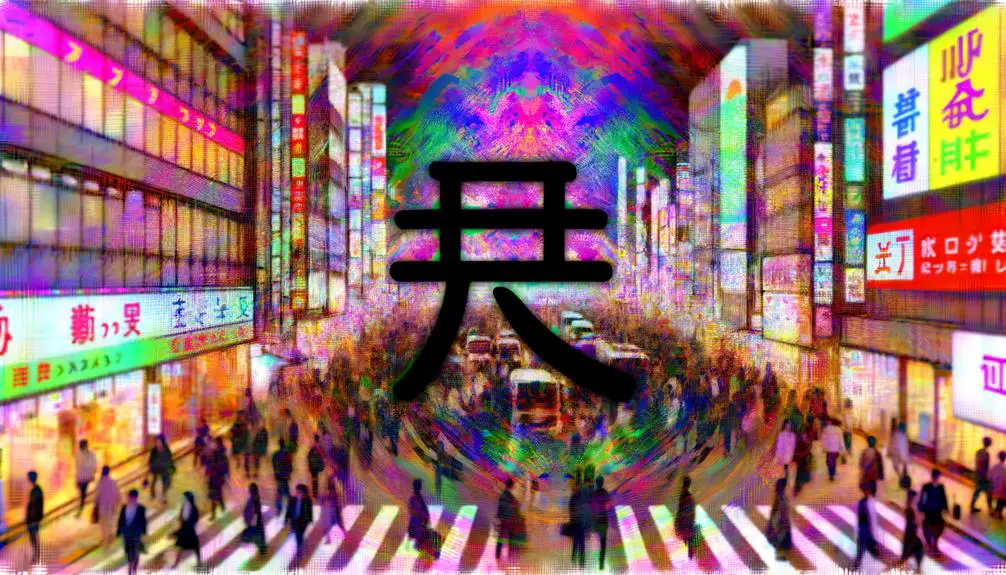
In contemporary Japanese, the term 'urusai' is commonly used to describe anything that is perceived as loud, annoying, or bothersome, extending beyond auditory disturbances to encompass a broader range of irritations. This term, while originally linked to noise, has evolved in modern usage to denote a variety of unwelcome stimuli.
'Urusai' is frequently employed in diverse contexts, such as:
- Social Interactions: Criticizing a person who is overly talkative or intrusive.
- Environmental Factors: Referring to loud construction work or traffic noise.
- Behavioral Annoyances: Describing children misbehaving in public.
- Media and Technology: Complaints about excessive notifications or disruptive advertisements.
Understanding 'urusai' in these contexts enables a deeper comprehension of its nuanced applications in everyday Japanese discourse.
Cultural Significance
The term 'urusai' not only encapsulates a range of modern irritations but also reflects deeper cultural attitudes towards noise and social harmony in Japanese society. Rooted in the principles of 'wa' (和), which emphasizes harmony and collective well-being, 'urusai' serves as a social mechanism enforcing quietness and respect for others' space.
Excessive noise is viewed as a disruption to societal balance, contrasting the ideal of a tranquil community. Historically, the term has been employed to maintain order in densely populated urban areas, where individual actions can greatly impact communal living. Consequently, 'urusai' embodies not just annoyance but a culturally ingrained expectation for maintaining social decorum and mutual respect in shared environments.
Symbol in Popular Media
From anime to cinema, the symbol for 'noisy' ('urusai') frequently appears in Japanese popular media, often serving as a narrative device to highlight characters' personalities and social dynamics. This symbol not only conveys auditory disturbance but also embodies cultural subtleties.
- Character Development: Characters labeled as 'urusai' often exhibit extroverted or disruptive traits.
- Social Commentary: The use of 'urusai' can critique societal norms, highlighting tensions between individuality and conformity.
- Emotional Expression: Scenes featuring 'urusai' often amplify emotional intensity, whether in comedic or dramatic contexts.
- Visual Symbolism: In manga and anime, the kanji for 'urusai' may be exaggerated or stylized to enhance visual impact.
This multifaceted symbol enriches narratives, providing deeper cultural and emotional resonance in Japanese media.
Conclusion
To wrap up, the kanji 騒 (sō) encapsulates the concept of noise through its etymological roots, intricate visual components, and varied pronunciations.
Historically, it provides insight into societal perceptions of sound and disorder in Japanese culture. Its usage spans from everyday language to popular media, symbolizing both literal and metaphorical noise.
Remarkably, a survey revealed that over 60% of Japanese citizens recognize the kanji 騒, underscoring its prevalent cultural significance and linguistic importance.

